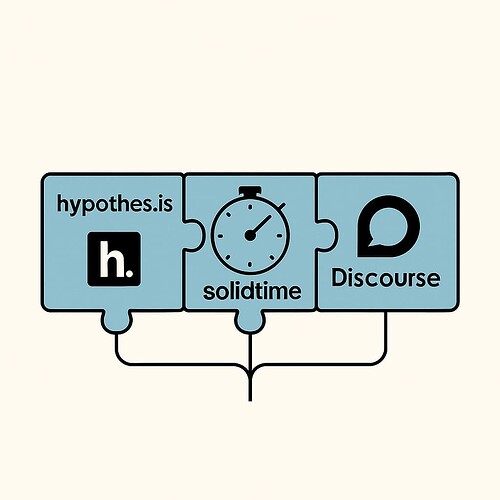During their internships, our students adopt key self-development practices:
-
Pomodoro — to focus and invest time deliberately
-
Fleeting notes — including regular inbox review
-
Zettelkasten / exocortex / personal knowledge base / public journal / thinking-through-writing
These aren’t just productivity hacks — they’re core to how we teach.
We don’t educate for the sake of education. We educate to change the world.
The problem: everything lives inside the LMS
We integrated these tools directly into our LMS. While students are inside the platform — everything works.
But the moment they step into the real world — reading documentation, working with external systems, facing actual challenges —
the tools disappear.
-
The Pomodoro timer only works inside course content
-
Fleeting notes can’t be captured while reading standards or books
-
Zettelkasten isn’t available outside our closed system
This creates a contradiction:
we install practices, but make them impossible to continue.
So students are forced to find and adapt external tools — which raises the obvious question:
Why spend time learning our tools at all, if they won’t last beyond the course?
The architectural shift
This realization made us rethink everything.
-
We’re dropping all in-house tools that have solid alternatives on the market
-
We’re focusing on seamless integration with existing, open, and well-supported ecosystems
-
We only write our own code when the product is truly unique
What replaces our internal tools
Instead of LMS modules, we now use:
-
hypothes.is for fleeting notes
-
solidtime for time tracking and Pomodoro
-
Discourse as a hybrid public-private Zettelkasten
What’s next
Our engineering focus now is integration — connecting these tools into a unified experience.
So that when a student builds a practice, they can carry it with them — from learning to life.
